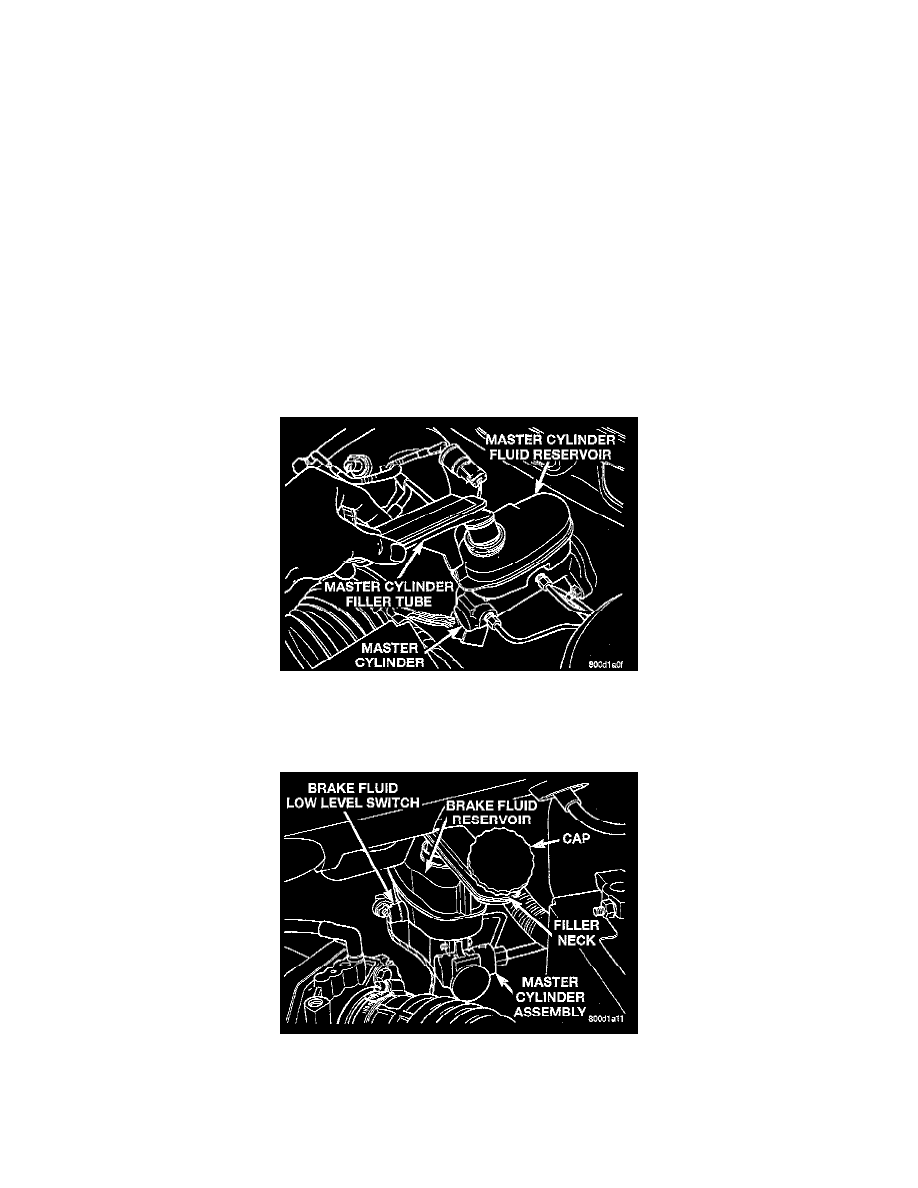Caravan FWD V6-201 3.3L VIN R MFI (1997)

Brake Master Cylinder: Service and Repair
Master Cylinder Replacement
Removal
CAUTION:
-
Vehicles equipped with traction control use a center port master cylinder. Vehicles not equipped with traction control use a compensating port
master cylinder. Be sure to verify if the vehicle is equipped with traction control and that the correct replacement master cylinder is used.
-
Vacuum in the power brake booster must be pumped down (depleted) before removing master cylinder from power brake booster. This is
necessary to prevent the power brake booster from sucking in any contamination as the master cylinder is removed. This can be done simply by
pumping the brake pedal, with the vehicle's engine not running, until a firm feeling brake pedal is achieved.
PROCEDURE
1. With engine not running, pump the brake pedal until a firm pedal is achieved (4-5 strokes).
CAUTION: Before removing the master cylinder filler tube from the brake fluid reservoir, the filler tube, brake fluid reservoir and master
cylinder must be thoroughly cleaned. This must be done to prevent dirt particles from falling into the brake fluid reservoir and entering the brakes
hydraulic system.
2. Thoroughly clean all surfaces of the filler neck, brake fluid reservoir, and master cylinder. Use only a solvent such as Mopar Brake Parts Cleaner
or an equivalent.
Master Cylinder Filler Tube Removal
3. Remove master cylinder filler tube from brake fluid reservoir by pushing down and rotating. Then remove the cap from the removed filler tube and
install it on the master cylinder reservoir.
Master Cylinder Assembly
4. Remove vehicle wiring harness connector, from the brake fluid level sensor, in master cylinder brake fluid reservoir.
